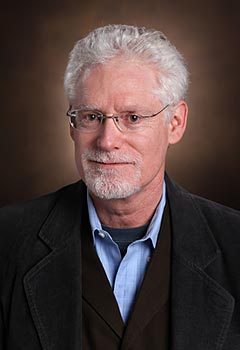
A special report released March 17 in the New England Journal of Medicine shows an association between below-target hospital nurse staffing and increased risk of patient mortality.
The study also examines what happens to mortality rates when hospital units become exceptionally busy due to high patient turnover.

Among the six authors is Peter Buerhaus, the Valere Potter Distinguished Professor of Nursing and director of the Center for Interdisciplinary Health Workforce Studies at Vanderbilt University Medical Center.
The other authors are from the University of California at Los Angeles, the Mayo Clinic and Duke University.
Using four years of continuous data from 43 adult units of an unnamed academic medical center, the authors found that patient exposure to registered nurse understaffing was associated with a 2 percent overall increase in patient mortality.
Exposure to understaffing occurred when actual unit staffing for any shift dropped eight hours below targeted R.N. staffing. As patients’ exposure to such shifts accumulated during their hospitalization, their risk of mortality increased.
Of the 176,696 unit shifts studied, 8 percent were found to have high patient turnover (defined as at least one standard deviation above median turnover for the unit and shift). The authors found that this level of turnover was associated with an overall 4 percent increased risk of patient mortality.
“For policy makers, I think the study results should give them a little pause to rethink how hard one wants to use incentives to increase efficiency in hospitals, because if you constrain resources too severely, then some hospitals may decrease nurse staffing and inadvertently put patients at increased risk for mortality,” Buerhaus said.
“[rquote]Policy makers should use increased caution regarding where they’re going with payment and delivery models, and not ignore the importance of assuring adequate nurse staffing, 24 hours each day,” Buerhaus said.[/rquote]
“For hospitals, I think this is a signal that nurses and staffing matter, and it indicates how high patient turnover can matter in a big way. Excessive turnover increases the workload on nurses, and depending on unit staffing and other characteristics of the nursing unit, it can increase the threat of adverse patient outcomes, particularly if a unit is understaffed,” he continued. “Hospital management, as well as physicians and nurses, should pay closer attention to shift-by-shift staffing and resources.”
What helps distinguish this study from previous studies are its considerably longer duration, its exact tracking of patient exposure to understaffing and high turnover on a shift by shift basis within each nursing unit, and its finer measurement of expected mortality rates for the population under study, which allows the two variables in question to stand out in sharper relief.
The probability that the two associations uncovered in the study were merely random is, in both cases, less than one in 1,000.
The authors calculated a baseline risk of mortality based on documented diseases and conditions, risk-adjusted mortality rates of each hospital unit and shift — day, evening, night — and, in the case of internal patient transfers, mortality risk variances associated with the admitting unit.
The hospital units under study were in the habit of carefully calibrating their R.N. staffing targets based on their census and their typical patients’ diagnoses, age, ability to move, respiration and other indicators.
To further refine these staffing targets, the authors also measured patient time away from the unit for clinical testing.
Some 15 percent of shifts were found to have below-target R.N. staffing of eight hours or more.
The de-identified medical center had an enviably low overall risk-adjusted mortality rate of only 60 percent of the average rate among its peer group.
It also has Magnet designation, a highly sought stamp of nursing excellence from the American Nurses Credentialing Center.